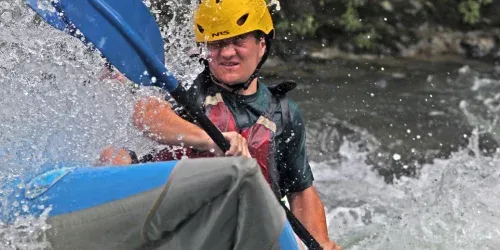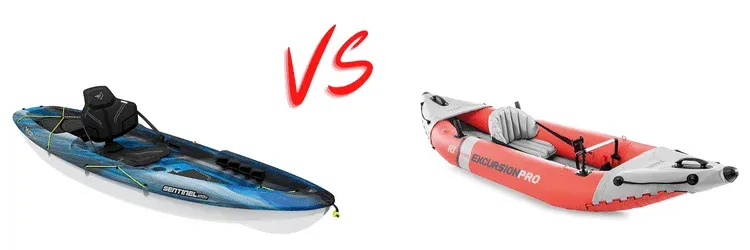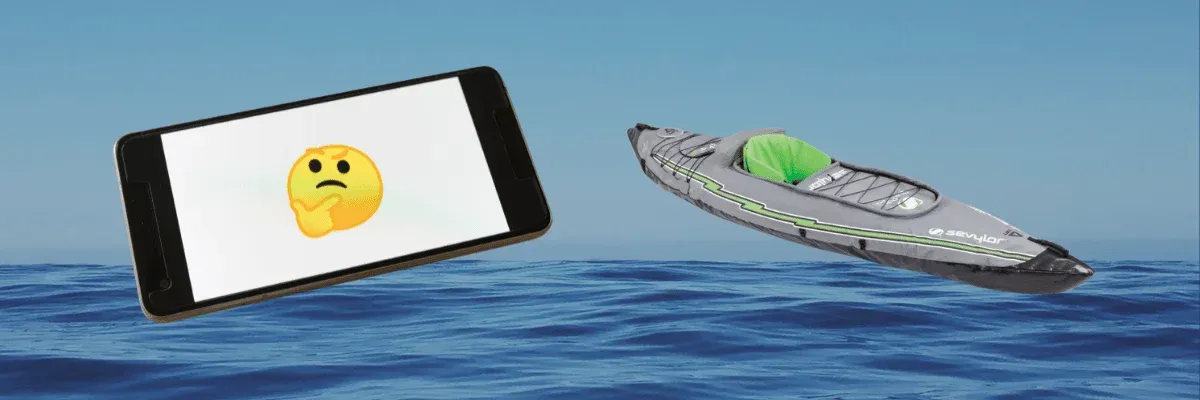In the world of water sports, kayaking stands out as a thrilling adventure that combines the serenity of being on the water with the adrenaline rush of navigating through rapids. But when it comes to tackling these challenging waters, can inflatable kayaks truly hold their own against the traditional hardshell kayaks? This article dives into the capabilities of inflatable kayaks in whitewater environments, exploring their design, durability, and performance.
Key Takeaways:
- Inflatable kayaks are designed with advanced materials and features that allow them to navigate through various classes of whitewater rapids.
- The best inflatable kayak for rapids combines durability, stability, and maneuverability to tackle turbulent water.
- Proper preparation, including selecting the right kayak and safety gear, is crucial for a successful and safe whitewater kayaking experience.

Understanding Inflatable Kayaks
Inflatable kayaks, once considered only suitable for calm water, have undergone significant advancements. Modern inflatable whitewater kayaks are crafted from military-grade PVC and drop-stitch technology, making them some of the most durable inflatable kayaks on the market. These materials ensure that the kayak can withstand the abrasive and impact forces encountered in rough waters.
The design of inflatable kayaks has also evolved to include features like self-bailing drainage holes, which are essential for expelling water that splashes into the boat during whitewater kayaking. Additionally, many models come equipped with thigh straps and a spray skirt, which help the paddler maintain control and stay dry in turbulent water.

The Right Kayak for the Right Rapids
When selecting an inflatable kayak for rapids, it's important to consider the class of whitewater you plan to navigate. Inflatable whitewater kayaks are categorized based on their ability to handle different classes of rapids, from class I (easy) to class VI (extreme and exploratory). Most inflatable kayaks are designed to comfortably handle up to class III rapids, with some models capable of taking on class IV whitewater.
For those looking to paddle through intense whitewater, the best inflatable kayak is one that offers a combination of stability and maneuverability. A stable boat is less likely to tip over, while good maneuverability allows the paddler to quickly navigate around obstacles and through fast-moving water.
Durability in the Face of Rapids
The most durable inflatable kayak is one that can resist punctures, abrasions, and UV damage. High-quality inflatable kayaks feature tough material like reinforced fabric, welded seams, and multiple air chambers, which not only contribute to the kayak's longevity but also provide an extra margin of safety should one chamber become compromised.
Moreover, the weight capacity of an inflatable kayak is an important consideration. A kayak that can handle more weight is typically more robust and better suited for carrying additional gear, such as a dry bag with a repair kit, which is an essential item for any river trip.

Stability and Performance
Stability is a key factor when paddling an inflatable kayak through rapids. A wider kayak tends to be more stable and can handle waves and small riffles with ease. However, stability should not come at the expense of performance. The best inflatable kayaks strike a balance, offering a stable boat that still allows for agile movements and quick directional changes.
Performance is also enhanced by features like tracking fins, which help the kayak maintain a straight path, and a double-bladed paddle, which provides the power and control needed to navigate through rough water.
Solo or Tandem: Choosing Your Adventure
Whether you prefer a solo inflatable kayak or a tandem kayak, there's an inflatable option suited for whitewater rapids. Solo kayaks are great for experienced kayakers who want full control, while tandem kayaks offer the opportunity to share the adventure with a partner. Tandem kayaks also tend to have more storage space, which can be beneficial for longer river trips.
Preparing for the Rapids
Before taking on whitewater rapids, it's essential to have the right gear and knowledge. A paddling helmet, life jacket, and appropriate clothing are non-negotiable for safety. Additionally, it's wise to carry a hand pump and a repair kit on board to address any issues that may arise during the trip.
Knowledge of the river and its conditions is equally important. Consulting a rafting guide or experienced kayakers can provide valuable insights into the challenges you may face on the water. It's also crucial to understand how to read the river, recognizing features like eddies, waves, and holes, and knowing the proper techniques for paddling through them.

Inflatable Kayaks vs. Hardshell Kayaks
The debate between inflatable and hardshell kayaks often centers on performance and durability. While hardshell kayaks are known for their rigidity and responsiveness, modern inflatable kayaks have closed the gap significantly. In fact, in some scenarios, the flexibility and impact absorption of an inflatable kayak can be advantageous in whitewater conditions.
Hard kayaks may offer better performance in terms of speed and edging, but inflatable kayaks provide a level of convenience and portability that hardshell models can't match. With the ability to deflate and pack into a relatively small space, inflatable kayaks are ideal for those with limited storage space or who wish to travel to remote river locations.
Advanced Features for Enhanced Safety
Safety is paramount in whitewater kayaking, and inflatable kayaks are equipped with features to enhance the paddler's security. Air chambers are separated by internal walls, ensuring that if one chamber is punctured, the kayak will remain afloat. Additionally, many inflatable whitewater kayaks come with grab handles, making it easier to hold onto the kayak in case of a capsize.
The Thrill of Whitewater Kayaking
Whitewater kayaking is an exhilarating experience that offers a unique blend of adventure and connection with nature. Whether navigating through small riffles or tackling class IV rapids, the thrill of the ride is unmatched. Inflatable kayaks have made this sport more accessible, allowing more people to experience the rush of whitewater rapids.
Maintenance and Care for Longevity
To ensure your inflatable kayak remains in top condition, regular maintenance is essential. After each use, especially in saltwater or dirty river water, it's important to rinse the kayak thoroughly and allow it to dry completely before storage. Checking for and repairing any punctures or wear and tear promptly will extend the life of your kayak.

Summary
Inflatable kayaks have come a long way in terms of design and capability, making them a viable option for handling rapids. With the right preparation and knowledge, paddlers can confidently take on whitewater challenges in an inflatable kayak. Remember to choose a kayak that matches the class of rapids you intend to navigate, prioritize safety gear, and maintain your kayak properly to ensure many successful river trips.

FAQs
What class of rapids can most inflatable kayaks handle?
Most inflatable kayaks are designed to handle up to class III rapids comfortably. Some specialized models can tackle class IV whitewater, but it's important to check the manufacturer's specifications before attempting more difficult rapids.
Are inflatable kayaks as durable as hardshell kayaks?
Modern inflatable kayaks are made with tough materials like military-grade PVC and feature welded seams and multiple air chambers, making them highly durable and capable of withstanding the rigors of whitewater rapids.
Can I take an inflatable kayak on a multi-day river trip?
Yes, many inflatable kayaks have ample storage space and are designed for stability and durability, making them suitable for multi-day river trips. Ensure you have the necessary gear, including a repair kit and dry bags, to keep your belongings safe and dry.
Related articles:











